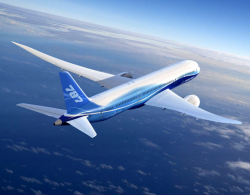 As the first quarter of 2013 approaches its conclusion, activity in the airline world is already off to a “flying” start-or not-as the case may be…
As the first quarter of 2013 approaches its conclusion, activity in the airline world is already off to a “flying” start-or not-as the case may be…
One of the biggest pieces of news has been the grounding of Boeing’s long awaited 787 Dreamliner.
Problems with the aircraft’s batteries are proving tricky to diagnose and rectify. Boeing has received approval from the U.S. Federal Aviation Administration for its plan to test and certify improvements to the 787’s battery system but it is still likely to be an agonising few months for Boeing and its customers. Not only are aircraft grounded but new ones are not being delivered. The problem will compound as more airlines become due to accept aircraft and introduce them to service.
Headaches no doubt for airline network planners.
Airlines including the UK’s Thomson Airways and British Airways are having to re plan summer flight schedules which were due to be operated by the Dreamliner. We’ve learned of Qatar Airways delaying the introduction of new routes and cutting capacity on others. LOT Polish airlines has taken the 787 out of its planned summer schedule. Norwegian is due to introduce long haul low cost services for the first time without the requisite aircraft to do so. It will have to rent in alternative capacity. How easy will this be to find and at what price?
Let’s put it in context. All new aircraft face inevitable teething troubles. In my career I’ve seen problems with several aircraft including the venerable Boeing 747 “Jumbo”. There were early snags with Airbus’s short haul work horse, the A320-nick named by engineers in the early days, “the ground bus” & the McDonnell Douglas DC-10. These early difficulties were all (sometimes painfully) overcome and the aircraft went on to become commercially successful, giving sterling service over many years. Only last year the focus was on Airbus’s giant A380 wing cracks, a problem now understood and being resolved.
Some in the industry believe that, for the 787 things are likely to get worse before they get better, but let’s be clear, they will get better. Perhaps what this does show is the pressure on manufacturers’ to meet airline requirements for better fuel efficiency, improved payload and range characteristics. This dictates a need to innovate, to “push the envelope” and turn to new materials, technology and manufacturing processes.
The industry cannot escape this current painful process. It has to take brave leaps forward. But in order to do so, it also has to accept that there will be problems to overcome on the way – including coping with the ensuing publicity. It is therefore better to take the short term pain now in the interests of the long term gain that this will ultimately bring-for airlines, for passengers, for manufacturers.
Leave a Reply